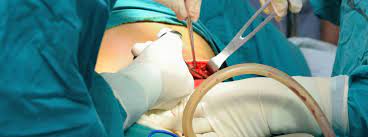A laparoscopic gynecologist can play a crucial role in diagnosing and treating fertility issues in women through minimally invasive surgical techniques. Here are several ways in which they can help:
1. Diagnosis
- Evaluation of Reproductive Organs: Laparoscopy allows the gynecologist to directly visualize the uterus, fallopian tubes, and ovaries. This helps in identifying any abnormalities that might be contributing to infertility.
- Detection of Endometriosis: Endometriosis, a condition where tissue similar to the uterine lining grows outside the uterus, can be diagnosed accurately with laparoscopy.
- Assessment of Tubal Patency: The procedure can check whether the fallopian tubes are open or blocked, which is essential for natural conception.
- Identification of Adhesions: Scar tissue or adhesions, often resulting from previous surgeries or infections, can be detected and assessed.
2. Treatment
- Removal of Endometriosis: Laparoscopic Gynecologist surgery can remove or ablate endometriotic lesions, potentially improving fertility.
- Treatment of Ovarian Cysts: Ovarian cysts, such as those caused by polycystic ovary syndrome (PCOS), can be removed to restore normal ovarian function.
- Correction of Tubal Blockages: Laparoscopy can be used to remove or repair blockages in the fallopian tubes, enhancing the chances of natural conception.
- Lysis of Adhesions: Scar tissue or adhesions that are interfering with the reproductive organs can be removed.
- Fibroid Removal: Uterine fibroids, which can impede fertility, can be excised laparoscopically.
3. Assisted Reproductive Techniques (ART)
- Preparation for ART: Laparoscopy can be part of the preparatory steps for assisted reproductive techniques like in vitro fertilization (IVF). It ensures that the reproductive organs are in the best possible condition before starting ART.
- Ovarian Drilling: In cases of PCOS, laparoscopic ovarian drilling can induce ovulation by destroying a small portion of ovarian tissue.
4. Other Benefits
- Minimally Invasive: Laparoscopy involves small incisions, leading to less pain, quicker recovery, and minimal scarring compared to traditional open surgery.
- Accurate Diagnosis and Treatment: Direct visualization of the reproductive organs provides a more accurate diagnosis and allows for precise treatment.
- Reduced Recovery Time: The minimally invasive nature of laparoscopy results in shorter hospital stays and faster return to normal activities.
By using laparoscopy, gynecologists can both diagnose and treat conditions that contribute to infertility, significantly improving the chances of conception for many women.





Comments